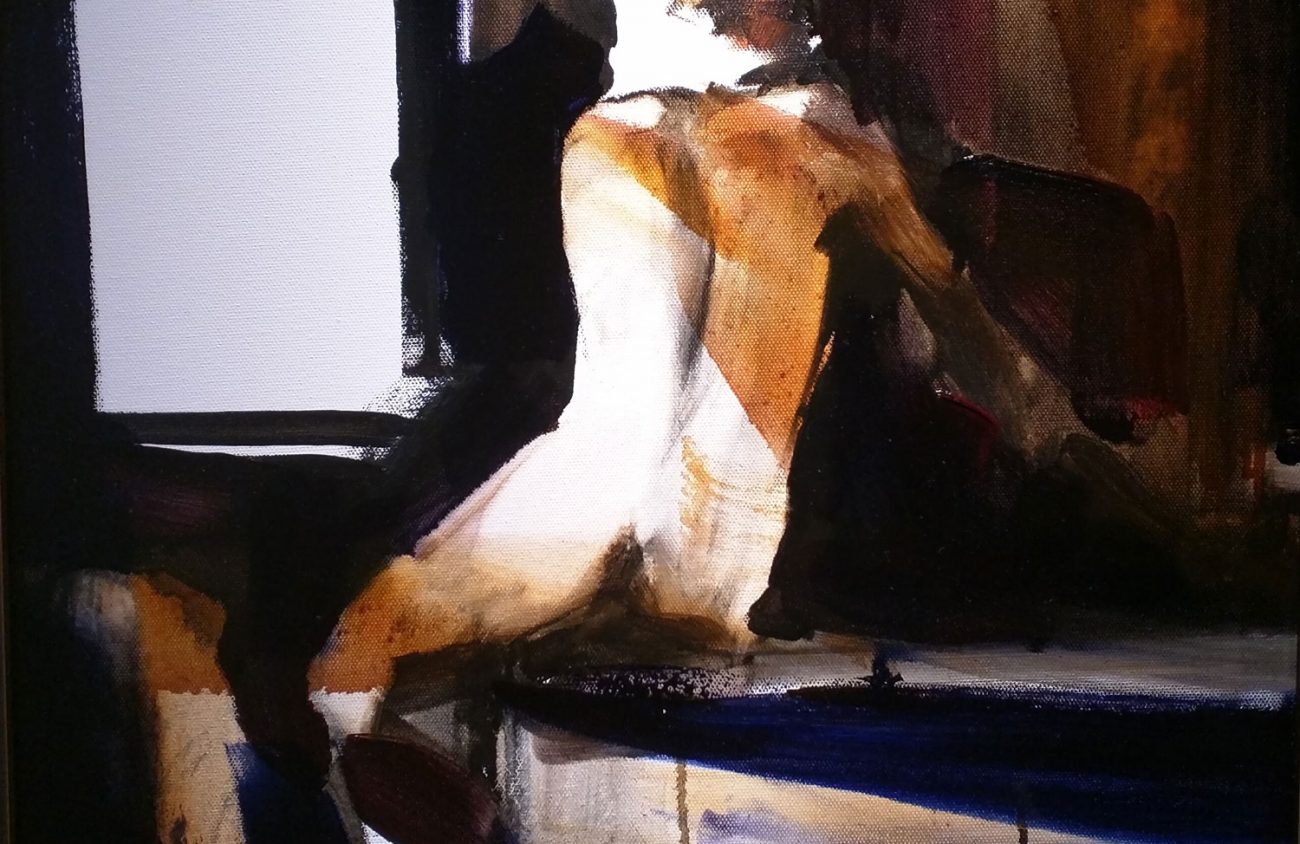When I met Adam Grosowsky to discuss his art, I wasn’t expecting a philosophical discussion. But Grosowsky, 58, was in a reflective mood, as interested in talking about life as about his paintings, which are on exhibit until Saturday, Dec. 23 at the Karin Clarke Gallery. He began by citing the Marcus Aurelius quote in which time is equated with rushing water and events are swept away and replaced.
“Time is a river of fleeting events …” he recited and then spoke about the events that brought him to this point, to this moment in the river — the gallery — surrounded by his oil paintings, a handful of which have already been sold.
Grosowsky has sold more than 1,500 paintings in his 30 years as an artist, to Nordstrom’s (commissioned paintings from him for their permanent collection), to the Karin Clarke Gallery and to numerous other galleries along the West Coast.
Grosowsky had several goals when he was younger: to become a practicing artist, to be an art professor, and to walk on a cable without a tether. He has accomplished all his goals, though not as easily as all that, and certainly not as straightforward as one, two, three.
In fact, Grosowsky likened his life to a river more than to a neat set of steps.
Both of his parents were instructors, and the reason he acquired a master of fine art degree was to get a job teaching. Not being able to find a teaching job, he found work at the former Café Zenon on Pearl Street. He worked at the café for 11 years, and he is proud of the paintings in his new show titled “Zenon 1” and “Zenon 2.” Grosowsky likes their composition and painterly approach. Since the restaurant no longer exists, I asked if he worked from memory. “Zenon 1” just appeared as he was painting, he said.
Grosowsky’s oil paintings are fairly large, and his subjects can be categorized as portraiture, landscape and circus fantasy. Paint is piled on thick and in washes, or is allowed to drip.
Among my favorite works are the relatively small ones on a back wall. “Figure Study: Looking” in particular has the immediacy of a gesture drawing in paint.
Grosowsky was trained as a printmaker, a form of art that requires exactitude, but after working with prints for 10 years he switched to painting. “It was liberating,” he says. “Paint is more beautiful if you don’t always try to control it.”
The practice of letting go to some extent, working without a net, parallels the artist’s preoccupation with slacklining, a sport he helped to create. Rather than working with a belay or tether, as in rock climbing, he walks on a cable stretched between two points with no additional safety. To practice he stretches a line across the river and wears a wetsuit so if he falls, it’s into water rather than on a hard surface.
Grosowsky considers himself a self-taught artist. To learn the techniques of painting he copied the masters, an age-old practice that he now assigns to his students.
Of all the goals he’s accomplished, he feels most grateful for the 25 years he’s been teaching art at Lane Community College. His fondness for teaching is evident in a large-format self-published book the gallery has on display titled A Primer of Western Representational Imagemaking Principles (and Other Lies). The book is “Illustrated by Adam Grosowsky and His Students at Lane Community College” and reflects all of his accomplished goals, including photographs of him slacklining. Its main purpose is to convey techniques that two-dimensional artists use to represent the three-dimensional world.
Artists must have technique under their control. On the other hand, Grosowsky advises his students to “drive it like you stole it.” He’s not advocating that his students steal, rather he’s encouraging them to go joyriding when they make art.
This interplay between control and letting go, stepping carefully and working without a tether, is evident in Grosowsky’s life and the artworks currently showing at the Karin Clarke Gallery.
